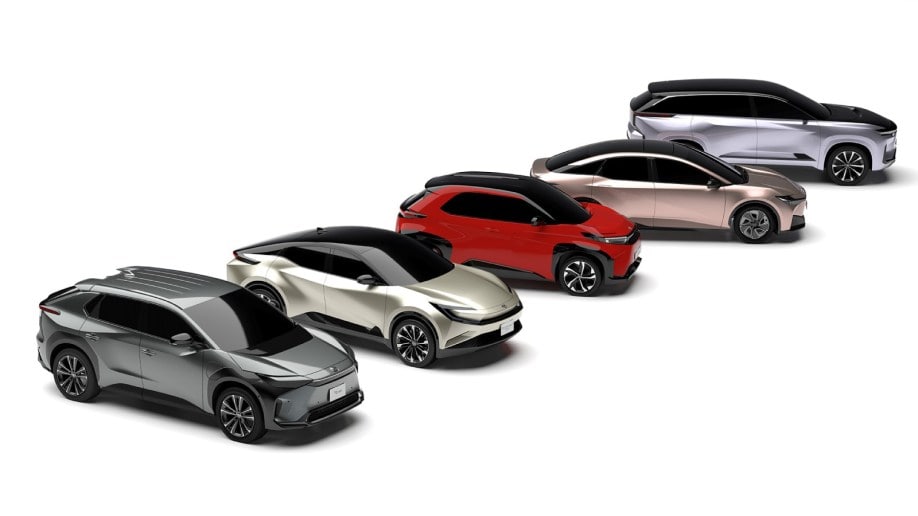
The world’s largest automaker unveiled a new technology roadmap that centers on using solid-state batteries and other advanced technologies to catch up in the fast-growing electric vehicle (EV) race.
The news didn’t concern specific car designs. Instead, it centered around two types of batteries.
First: More Efficient Lithium-ion Batteries
Most of today’s EVs use lithium-ion batteries – the same type found in cell phones and laptop computers. Toyota says it can make those more efficient within three years.
Reuters reports, “Toyota said it aims to launch next-generation lithium-ion batteries from 2026 offering longer ranges and quicker charging.” The company said next-generation lithium-ion technology would power an EV for “the high end of the market” with “a range of up to 1,000 km (621 miles),” Reuters says.
The company did not specify which testing cycle that figure used. European calculations routinely project much longer ranges than the system used by the American EPA.
Later: Solid-State Batteries
In the long term, Toyota’s plans depend on developing advanced solid-state batteries.
Most current battery technologies rely on electrolyte gels to store energy. But scientists and engineers have spent decades researching batteries made entirely of solid substances. So-called solid-state batteries promise more energy density, allowing them to store more energy in the same space.
Automakers believe solid-state batteries could charge faster, provide longer ranges, and weigh less than today’s batteries. Some designs even dispense with rare metals at the center of geopolitical struggles and concerns over working conditions in mines.
Toyota, the Associated Press reports, “aims for a commercial solid-state battery as soon as 2027.” The company claims it could lower charging times to “ten minutes or less.”
That has the potential to solve many of the headaches of EV ownership.
The spread of EVs has been throttled by the limitations of nationwide charging networks. EVs that charged faster and less often could lessen the need for a massive buildout of the nation’s charging infrastructure.
They could also make EV ownership easier for those who routinely drive long distances. Reducing demand for rare minerals could make them less expensive.
But, Reuters notes, “such batteries are expensive and likely to remain so for years.” Even when engineers perfect the first examples, the industry will face the challenge of scaling up production to produce millions of the batteries.
Other automakers are also pursuing the technology, with rival Nissan perhaps the most public about its plans. BMW says it may have solid-state batteries in testing later this year.
Why Toyota Has Held Back So Long
The plan is designed to help Toyota catch up to other automakers in EV production. Toyota has been slow to embrace the high-profile technology. It sells just one EV in America today – the bZ4X, which debuted to lackluster reviews, faced an embarrassing early recall that forced Toyota to buy back cars from owners, and has sold poorly.
But Toyota isn’t behind because it wasn’t paying attention. The company’s leadership had made a strategic decision to focus on hybrids instead.
Former CEO (and current chairman) Akio Toyoda led the company with a vision that hybrids, not EVs, were a better investment. Toyoda is the grandson of the company’s founder.
He wasn’t wrong. The company dominates hybrid sales in America. And while EVs win headlines, hybrids outsell them by a considerable margin.
Reporters recently obtained internal communications showing that Toyota can build 90 hybrids, or six plug-in hybrids, with the same minerals used in just one EV.
So, while other automakers have won headlines with splashy EV debuts, Toyota has nearly cornered the market on hybrids, which sell better and face fewer supply-chain problems.
With that strategy, Toyota has grown to the point that it builds half of the planet’s 10 best-selling vehicles.
But what’s good for Toyota may not be good for Toyoda.
A Challenge to Leadership
Toyoda stepped down as CEO early this year, handing the reins to former Lexus chief Koji Sato. Toyoda remains chair of the board.
But that board is in crisis.
Early this month, the California Public Employees Retirement System – the world’s largest institutional investor – announced plans to vote against Toyoda remaining chairman at this week’s annual board meeting. New York’s pension fund, another large investor, followed suit.
The pair, reports Automotive News, “questioned the board’s independence and the company’s environmental policies,” including its slow shift to EVs. The pair have backed a proposal “to strengthen disclosure of Toyota’s environmental strategy…amid criticism from some investors and activists that Toyota is dragging its feet on electric vehicles.”
Toyoda is expected to survive the vote. But board nominations are ordinarily tightly scripted affairs with little drama. This one is controversial partly because Toyota has been reticent to announce major EV plans.
The battery strategy laid out today may head off a shareholder revolt. Toyota’s stock price jumped nearly 6% in early trading after the plan was announced.
The plan was unquestionably released under pressure. But it may be enough.







